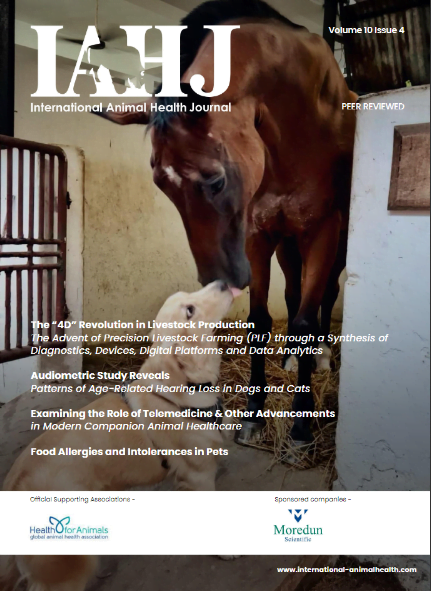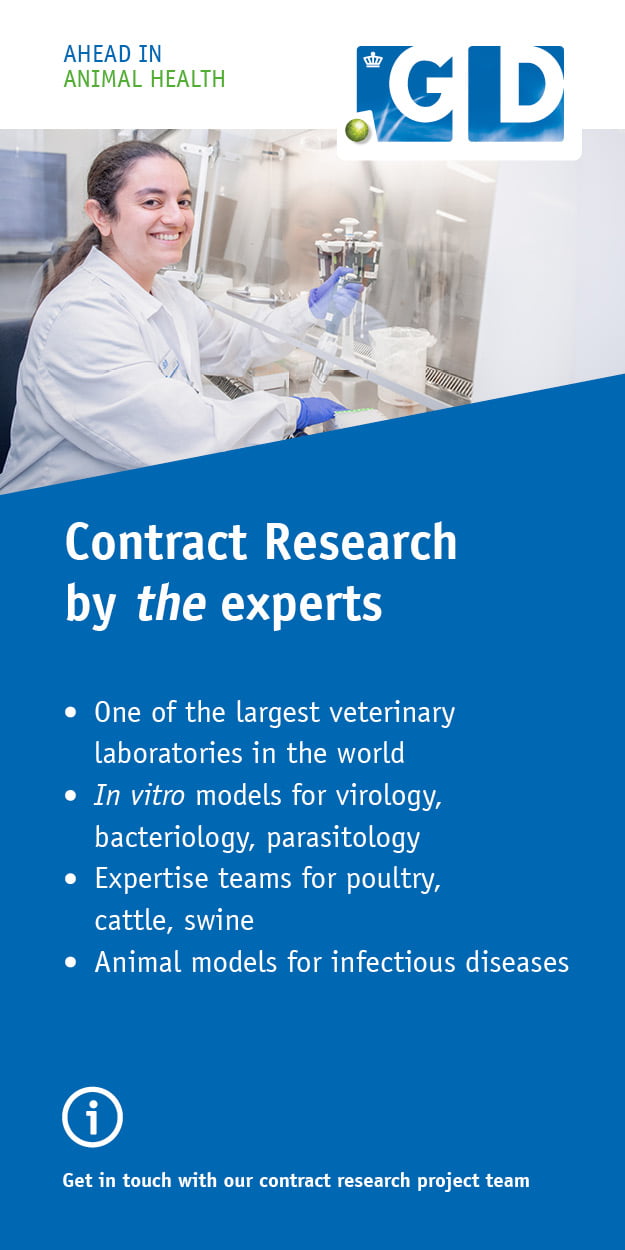| · Antibiotics are, and will continue to be, vital for animal health and welfare · Responsible use means that the right antibiotic should be used at the right dosage when treatment is needed · Immunostimulants offer a novel approach to mitigating infectious diseases, and the potential to reduce overall antibiotic use |
Budapest (Hungary), October 17, 2016 – The topic of antibiotic resistance is widely discussed globally, and is important for both human and veterinary health. With growing concerns of resistance development, the animal health and livestock production industry is faced with increasing pressure to use antibiotics more prudently and reduce overall use, without compromising animal health and welfare.
A roundtable of thought leaders in veterinary medicine has discussed the role that antibiotics will continue to play in animal health and welfare. They emphasized the importance of responsible use as key to mitigating antibiotic resistance, and the role of alternative approaches. The scientific roundtable on antibiotics in animal health, hosted by Bayer, was held in Budapest at the 8th Antimicrobial Agents in Veterinary Medicine conference.
Moderator of the roundtable, Professor Peter Silley, University of Bradford in Southampton, United Kingdom, said: “Antibiotics are necessary in veterinary treatment, and concerted efforts that involve all stakeholders are needed to address antibiotic resistance. The roundtable discussion resulted in two clear messages: the health and welfare of animals remain a priority, and we see alternative and novel approaches as key to mitigating infectious diseases, ultimately reducing the overall need for interventions with antibiotics.”
Professor Peter Borriello, Chief Executive, Veterinary Medicines Directorate, United Kingdom, said: “There is growing attention on the resistance of bacteria, and one of the areas in the spotlight is the use of antibiotics in veterinary health. This concern over antibiotic resistance has captured the attention of regulators and politicians around the world. The topic is high on the agenda at inter-governmental meetings and there is increasing pressure to reduce overall antibiotic use.”
Speaking at the roundtable, Professor Joseph Blondeau, from the Faculty of Pathology at the University of Saskatchewan in Canada, identified the core contributors to resistance as: overuse, under dosing, incorrect therapy and product misuse. He said: “We have the responsibility to use the right antibiotic at the right dosage, when there is a clear need for treatment, in humans as well as in animals.”
The group discussed alternative approaches as an essential strategy to address the clear need to reduce over-reliance on antimicrobials. Professor Johanna Fink-Gremmels, Institute of Risk Assessment Sciences at Utrecht University in The Netherlands, explained: “There are no alternatives to antibiotics when treatment is needed for a diseased animal. However, by optimising the resilience of animals, producers can provide the best opportunity for animals to quickly return to health and recover from illness, depression and adversity. The ability to be resilient and tolerant to diseases is dependent on a number of factors, which vary dependent on the type of disease, including the genetics, husbandry and nutrition of the animal.”
Dr Jason Nickell, Manager of Veterinary Services at Bayer, highlighted Bovine Respiratory Disease (BRD) as one of the most devastating diseases affecting the beef cattle industry, and an area where novel technology is already being applied to stimulate the animal’s innate immune system: “There are three important factors which impact the effect of BRD; the host (calf), the pathogen and the environment. Current tools and management practices, including antibiotics, are limited to affecting the pathogen and environment, however not the host. By expanding our focus across all three parameters, we can limit the effects of BRD in calves, while optimising their resilience, welfare, and performance.”
Stimulation of the innate immune system is an area with great potential for further development. Novel immunostimulants are already demonstrating clear benefits in reducing BRD associated mortality, and in some cases, reducing the overall use of antibiotics.
Dr Nickell continued: “We see clear benefits with novel immunostimulants in BRD therapy. They have helped to reduce BRD associated mortality, and we also see a trend in improved treatment outcomes when immunostimulants are used alongside antimicrobial therapy. This is encouraging, and we are confident that novel immunostimulants can support the responsible use of antibiotics, and perhaps an overall reduction in antibiotic use over the long term.”
More information on innate immunity is available at www.innateimmunity.bayer.com/ and on immunostimulants in animal health at https://youtu.be/SX0Pd0LwkhA.
The key outtakes from the AAVM roundtable discussion can be viewed on our YouTube channel Bayer4Animals at https://youtu.be/dBehp3xNvf0.
Professor Peter Borriello, Chief Executive, Veterinary Medicines Directorate, United Kingdom, said: “There is growing attention on the resistance of bacteria, and one of the areas in the spotlight is the use of antibiotics in veterinary health. This concern over antibiotic resistance has captured the attention of regulators and politicians around the world. The topic is high on the agenda at inter-governmental meetings and there is increasing pressure to reduce overall antibiotic use.”
Speaking at the roundtable, Professor Joseph Blondeau, from the Faculty of Pathology at the University of Saskatchewan in Canada, identified the core contributors to resistance as: overuse, under dosing, incorrect therapy and product misuse. He said: “We have the responsibility to use the right antibiotic at the right dosage, when there is a clear need for treatment, in humans as well as in animals.”
The group discussed alternative approaches as an essential strategy to address the clear need to reduce over-reliance on antimicrobials. Professor Johanna Fink-Gremmels, Institute of Risk Assessment Sciences at Utrecht University in The Netherlands, explained: “There are no alternatives to antibiotics when treatment is needed for a diseased animal. However, by optimising the resilience of animals, producers can provide the best opportunity for animals to quickly return to health and recover from illness, depression and adversity. The ability to be resilient and tolerant to diseases is dependent on a number of factors, which vary dependent on the type of disease, including the genetics, husbandry and nutrition of the animal.”
Dr Jason Nickell, Manager of Veterinary Services at Bayer, highlighted Bovine Respiratory Disease (BRD) as one of the most devastating diseases affecting the beef cattle industry, and an area where novel technology is already being applied to stimulate the animal’s innate immune system: “There are three important factors which impact the effect of BRD; the host (calf), the pathogen and the environment. Current tools and management practices, including antibiotics, are limited to affecting the pathogen and environment, however not the host. By expanding our focus across all three parameters, we can limit the effects of BRD in calves, while optimising their resilience, welfare, and performance.”
Stimulation of the innate immune system is an area with great potential for further development. Novel immunostimulants are already demonstrating clear benefits in reducing BRD associated mortality, and in some cases, reducing the overall use of antibiotics.
Dr Nickell continued: “We see clear benefits with novel immunostimulants in BRD therapy. They have helped to reduce BRD associated mortality, and we also see a trend in improved treatment outcomes when immunostimulants are used alongside antimicrobial therapy. This is encouraging, and we are confident that novel immunostimulants can support the responsible use of antibiotics, and perhaps an overall reduction in antibiotic use over the long term.”
More information on innate immunity is available at www.innateimmunity.bayer.com/ and on immunostimulants in animal health at https://youtu.be/SX0Pd0LwkhA.
The key outtakes from the AAVM roundtable discussion can be viewed on our YouTube channel Bayer4Animals at https://youtu.be/dBehp3xNvf0.











